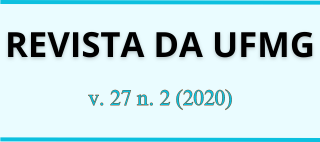Understanding and mitigating mining major accidents
application of theoretical-conceptual model for risk management
DOI:
https://doi.org/10.35699/2316-770X.2020.21539Keywords:
major accidents, risk management, safety management, risk management modelAbstract
Recurring major accidents have raised questions over best practices in mining. The largeness of the damage and the resonance of the victims’ voices raised doubts about the sustainability of mining processes. Is possible mining in a responsible and productive way? What would be the roles and responsibilities of the protagonists and assistants in the pitiful scenes? Therefore, a study that seeks to rescue the idea of mining major accidents is relevant to try to answer these questions. At the methodological level, a theoretical-conceptual application model will be adopted regarding risk management techniques and analysis of past accidents. The findings will show that it is possible to have responsible, productive mining and that its damage, if any, can be mitigated.
KEY WORDS: Major Accidents. Mining. Risk Management.
Downloads
References
BARCELLOS, C. et al. Avaliação dos Impactos sobre a saúde do desastre da mineração da Vale (Brumadinho, MG). Instituto de Informação e Comunicação Científica e Tecnológica em Saúde (ICICt/Fiocruz), 2019. Disponível em: https://www.arca.fiocruz.br/bitstream/icict/32268/3/Nota_Tecnica_Brumadinho_impacto_Saude_01022019.pdf. Acesso em: 1 jul. 2020.
BOWKER, L.; CHAMBERS, D. The risk, public liability & economics of tailings. Stonington: [s.e.], 2015.
BRASIL. Congresso. Câmara dos Deputados. Relatório sobre acidente na Usina da Gerdau em Ouro Branco – Minas Gerais. Câmara dos deputados, 2017. Disponível em: https://www.camara.leg.br/propostas-legislativas/2164534. Acesso em: 22 abr. 2020.
CAMPOS, P. H. A. et al. Health and Safety in Brazilian Mines: A Statistical Analysis. In: INTERNATIONAL SYMPOSIUM ON MINE PLANNING AND EQUIPMENT SELECTION (MPES), 28., 2019. Proceedings… MPES, 2019.
CANDIAN, R. C. et al. Análisis de la accidentalidad por caída de rocas en la minería de los Estados Unidos de Norte América. In: CONGRESSO IBEROAMERICANO EN MINERÍA SUBTERRÁNEA Y A CIELO ABIERTO UMINING, 2., Santiago de Chile, 2018. Anais… 2018.
CAROL, S., VILCHEZ, J.A., CASAL, J. Study of the severity of industrial accidents with hazardous substances by historical analysis. Journal of Loss Preventin in the Process Industries, Centre d’Estudis del Risc Tecnològic (CERTEC), Department of Chemical Engineering, Universitat Polotècnica de Catalunya ETSEIB, v. 15, p. 517-524, 2002.
CONSELHO DA UNIÃO EUROPEIA. Directiva do Conselho de 24 de junho de 1982 relativa aos riscos de acidentes graves de certas actividades industriais (82/501/ CEE). Luxemburgo: Jornal Oficial das Comunidades Europeias, n. L 230/1, 1982. Disponível em: https://op.europa.eu/pt/publication-detail/-/publication/ bb211be1-2448-4e7c-bfc5-1d33631f3dbe/language-pt. Acesso em: 1 jul. 2020.
EVAN, W. M.; MANION, Mark. Minding the Machines: Preventing Technological Disasters. Upper Saddle River (USA): Prentice Hall PTR, 2002.
FREITAS, C. M.; PORTO, M. F. S.; MACHADO, J. M. H. Acidentes industriais ampliados: desafios e perspectivas para o controle e a prevenção. Rio de Janeiro: Editora FIOCRUZ, 2000.
FREITAS, C. M; SILVA, A. S. Acidentes de trabalho que se tornam desastres: os casos dos rompimentos em barragens de mineração no Brasil. Rev. Bras. Med. Trab., v. 17, n. 1, p. 9-21, 2019.
IAEA – International Atomic Energy Agency. Basic Safety Principles for Nuclear Power Plants 75-INSAG-3. Report INSAG-12. Vienna: International Nuclear Safety Advisory Group, 1999.
IPHECA – International Programme on the Health Effects of the Chernobyl Accident. Health consequences of the Chernobyl accident, results of the IPHECA pilot projects and related national programmes: summary report. Geneva: World Health Organization, 1995. Disponível em: https://apps.who.int/iris/bitstream/handle/10665/41801/9241561815_eng.pdf?sequence=1&isAllowed=y. Acesso em: 2 abr. 2020.
KIDAM, K.; HURME, M. Statistical Analysis of Contributors to Chemical Process Accidents. Chem. Eng. Technol., v. 36, n. 1, p. 167-176, 2013.
LIRONG, W. et al. Major accident analysis and prevention of coal mines in China from the year of 1949 to 2009. Mining Science and Technology, China, v. 21, issue 5, p. 693-699, set. 2011.
REASON, J. Human Error. New York: Cambridge University Press, 1990.
REASON, J. Managing the Risks of Organizational Accidents. Hants (England): Aldershot; Brookfield (USA): Ashgate, 1997.
REASON, J. Human error: models and management. BMJ. Br. Med. J., v. 320, 768-770, 2000.
TAUSEEF, S. M.; ABBASI, T.; ABBASI, S. A. Development of a new chemical process-industry accident database to assist in past accident analysis. Journal of Loss Prevention in the Process Industries, Elsevier, p. 426-431, 2011.
UNEP – United Nations Environment Programme. Chemical Pollution: a global overview. Geneva: UNEP, 1992.
WORLD MINE TAIINGS FAILURES. World mine tailings failures-from 1915. World Mine Tailings Failures, 2019 [on-line]. Disponível em: https://worldminetailingsfailures.org/. Acesso em: 20 abr. 2020.
YANG, X.; HAUGEN, S. Implications from major accident causation theories to activity-related risk analysis. Safety Science, v. 101, p. 121-134, jan. 2018. Disponível em: https://doi.org/10.1016/j.ssci.2017.08.020. Acesso em: 22 abr. 2020.




